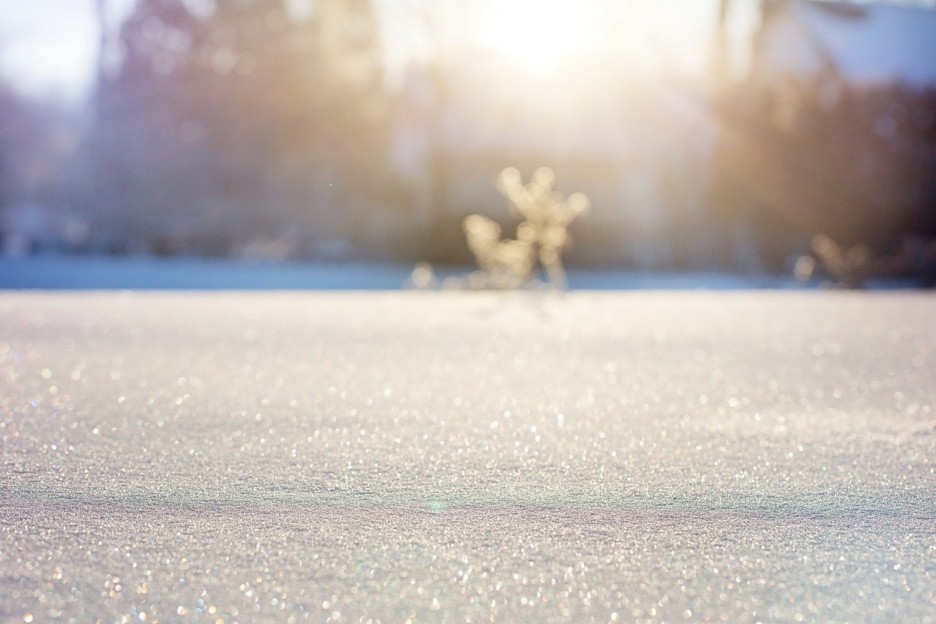Is It Safe To Eat Snow? Experts Weigh In Amid Reese Witherspoon's Viral TikTok

Reese Witherspoon's viral "Snow Salt Chococinno" video has raised questions about the safety of eating snow, and experts have weighed in on the debate.
On Friday, the Hollywood actress shared on TikTok a video of herself scooping snow off her covered grill and adding salted caramel sauce, chocolate syrup, and cold-brewed coffee to create Snow Salt Chococinnos.
The video prompted a wave of concerns and questions regarding whether it is safe to consume snow, leading Witherspoon to respond with three follow-up TikTok videos.
In one clip, she said she microwaved the snow to produce clear water, attempting to dispel any rumors about the snow being "dirty."
Witherspoon then defended her winter treat in a follow-up video, stating, "So, we're kind of in the category of, 'you only live once,' and it snows maybe once a year here. I don't know. Also, I want to say something -- it was delicious."
Reese Witherspoon eats snow with her spoon in new video. pic.twitter.com/h8Mc1fh4Ae
— Pop Crave (@PopCrave) January 20, 2024
Many experts have advised against consuming snow, but some said fresh snow is technically safe to eat, though only small amounts of it.
A 2017 Romanian study found that half-day old snow has minimal bacteria and is safe to consume.
"I am not recommending anyone eats snow. Just saying you won't get ill if you eat a bit," Istvan Mathe, the study's author, told the Associated Press at the time.
Staci Simonich, who discovered notable pesticide levels in high-altitude snow within certain U.S. national parks during her research, shared with NPR in 2016 that she would not stop her children if they want to eat a handful of freshly fallen snow from her backyard.
"The pesticide concentrations are low and the amount of snow eaten in a handful is small, so the one-time dose is very low and not a risk to health," the Oregon State University professor and environmental scientist said.
For those who want to follow Witherspoon's lead and create their own snowy drinks, make sure to avoid gray, brown, pink, and yellow snow.

Also known as "watermelon snow," pink snow may contain cold-loving algae, which gives it its vibrant color, according to The Washington Post.
Experts further suggested steering clear of snow that has been shoveled or plowed, as it may contain sand and chemicals. Additionally, caution is advised against consuming snow near animal tracks or bird feeders.
But while fresh, completely white snow is considered the safest to eat, there are a few caveats for consuming this, according to some scientists and researchers.
Due to its latticework structure, snow, especially those that fall in urban areas, can absorb pollutants and chemicals, including pesticides, mercury, formaldehyde, and black carbon from coal-fired plants and wood-burning stoves.
Dr. Parisa Ariya, whose study found that snow in urban areas can soak up the same substances produced by car exhausts, told HuffPost in 2016, "Snowflakes are ice particles with various types of surfaces that can absorb various gaseous or particulate pollutants."
"As a mother who is an atmospheric physical chemist, I definitely do not suggest my young kids to eat snow in urban areas in general," she said.

To address concerns about pollutants in snow, some experts recommended waiting a few hours into a snowfall before gathering fresh snow. The longer the snow falls, the lower the pollution levels in the air, making the snow cleaner.
"Snow acts like a scrubbing brush as it falls through the atmosphere. So, the longer the snow falls, the cleaner the air, and also the snow," said the National Snow and Ice Data Center, part of the Cooperative Institute for Research in Environmental Sciences (CIRES) at the University of Colorado Boulder.
Dr. Laura T. Martin, an assistant professor of pediatrics at The Ohio State University College of Medicine, also backed this.
"The safest snow to consume will be the whitest, fluffiest top layer of fallen snow, furthest away from the ground," she wrote in a blog post.





